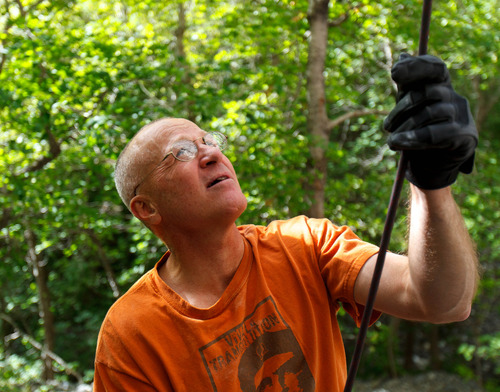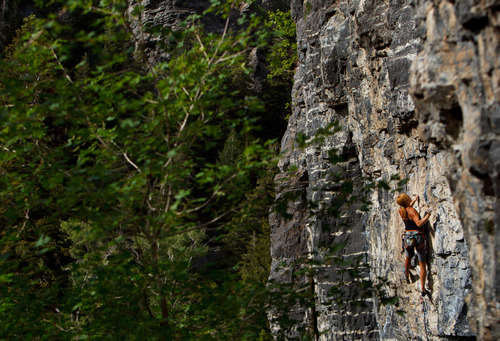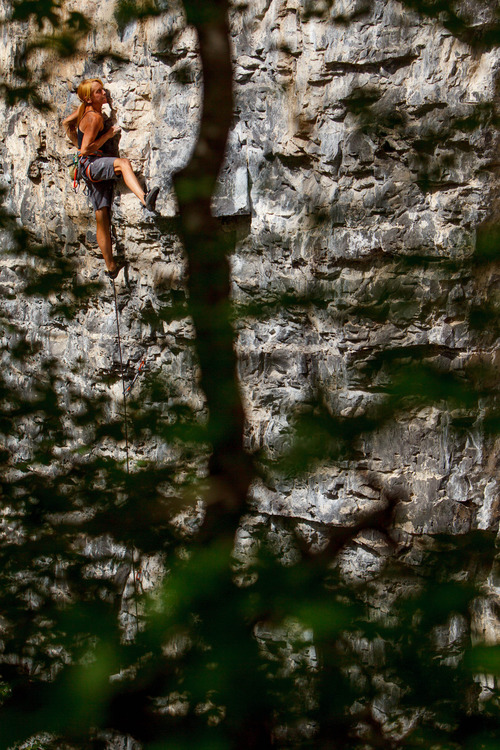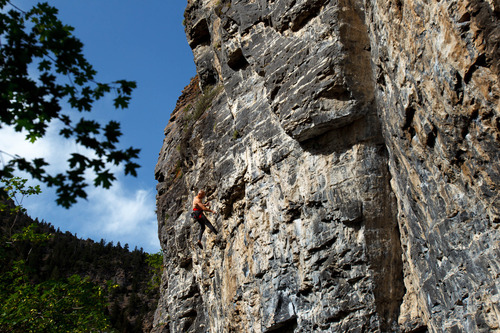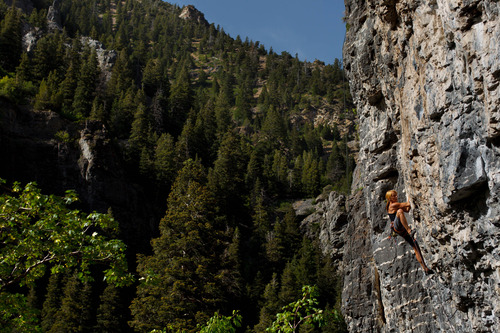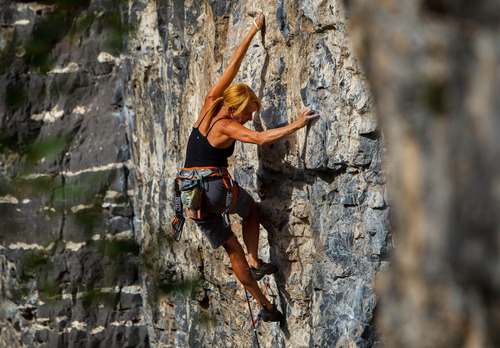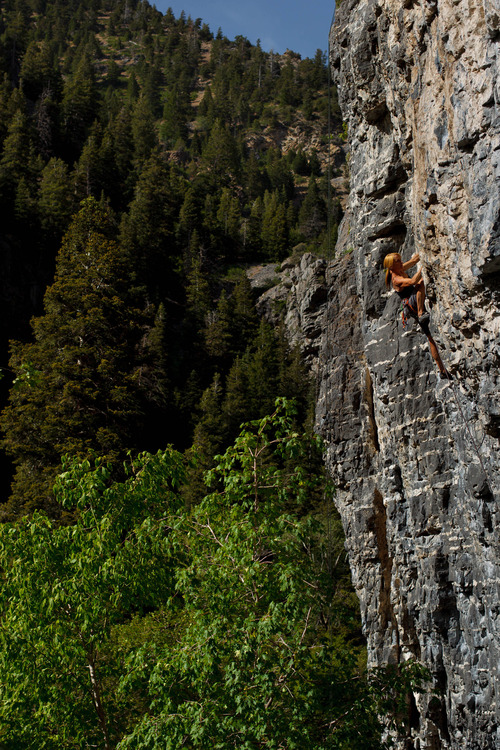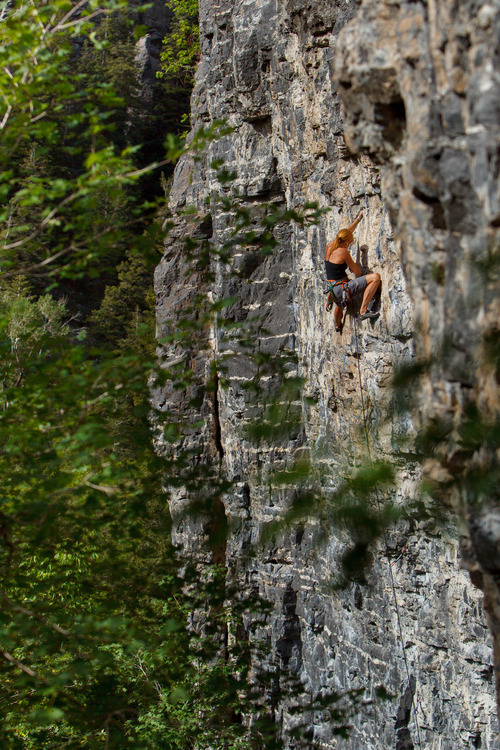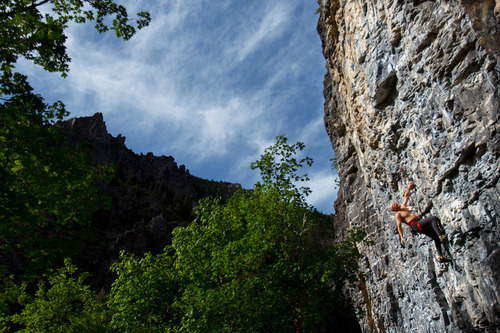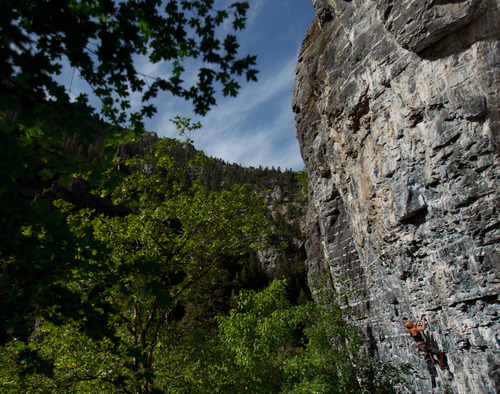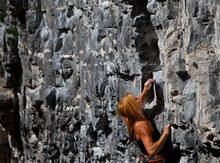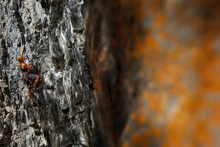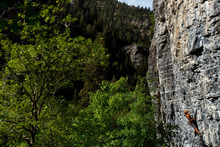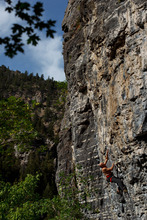This is an archived article that was published on sltrib.com in 2013, and information in the article may be outdated. It is provided only for personal research purposes and may not be reprinted.
About 20 years ago, American Fork Canyon became one of the nation's climbing hotspots for a particular kind of rock — overhanging limestone crags.
Utah climbers flocked to the canyon's scenic lower gorge and developed routes with names like Quicklime Girl, Teenagers in Heat, Rush Hour and The Atheist.
This development occurred without much financial support from the U.S. Forest Service, which manages the busy canyon and charges visitors fees to cover the cost of numerous recreation-oriented amenities. Now that fee system faces a major overhaul under a policy change the Forest Service is pursuing at the national level.
For years, climbers such as Gordon Douglass and Mindy Shulak, as well as hikers, mountain bikers and anglers, have been paying the fees collected at information booths at either end of the American Fork Canyon-Alpine Loop.
"I pay my income taxes. We shouldn't have to pay to use undeveloped public land, but I agree we should pay to camp or use picnic areas," Douglass said.
Visitors paid regardless of whether they actually used the restrooms or picnic tables funded by the fees. This requirement will soon change, but it may depend on whether a visitor parks in a paved lot with facilities.
The Uinta-Wasatch-Cache National Forest has released a proposal to eliminate or shrink its recreational fee areas at American Fork and the Mirror Lake Scenic Byway in favor of a system that targets visitors who actually use amenities.
"The assumption is that when you are using trails, you are using the amenities at those trailheads, like parking, restrooms and picnic areas. In that case, the fee applies," said Jon Stansfield, Pleasant Grove district ranger who oversees American Fork Canyon.
The fee area will be reduced to cover just the 15-mile road corridors along State Route 92 from Timpanogos Cave National Monuments, over Alpine Summit to the Aspen Grove, and along SR 144, the spur road to Tibble Fork Reservoir.
Those just visiting the monument and concession-operated campgrounds, which require their own fees, are not required to pay the rec fee. Outside this fee corridor, there are three "stand-alone" fee areas: Silver Lake Flat, a trailhead near the end of SR 144; Cascade Springs; and Upper Falls, a picnic area in Provo Canyon.
In a typical year, 1.2 million people visit the loop road, leaving $750,000 in fees. This revenue stream is likely to drop as a result of the changes, but forest officials say they intend to maintain the same level of services for the public.
Stansfield noted all visitors, climbers included, likely benefit from the investments the fee program makes possible.
"Using the revenue generated we could better develop the climbing areas," he said. "In the future, those fees can be used to provide parking or a bridge [across the creek], make it a more user-friendly area."
Douglass has opposed the American Fork fee since its inception, but he conceded mixed feelings because the Forest Service still needs to maintain popular recreation destinations.
"On the other hand, I wish the federal government would get its priorities straight and spend money on parks and things like that instead of sending it to Iraq," he said.
How to comment
The U.S. Forest Service invites comments from the public on its proposals to change recreational fee programs for American Fork Canyon and Mirror Lake. You have until July 31 to email them to dresare@fs.fed.us.
Under programs in place since 1997, visitors pay $6 per vehicle when they drive up the canyon or along the Mirror Lake highway. The fee is good for three days. A $12 pass is good for a week and a $45 pass covers a year. The proposed changes would require visitors to purchase the pass when they use specific sites and park along a certain stretch of the Alpine Loop road. Details can be found at the Uinta-Wasatch-Cache National Forest website, http://1.usa.gov/16QlUsg.


